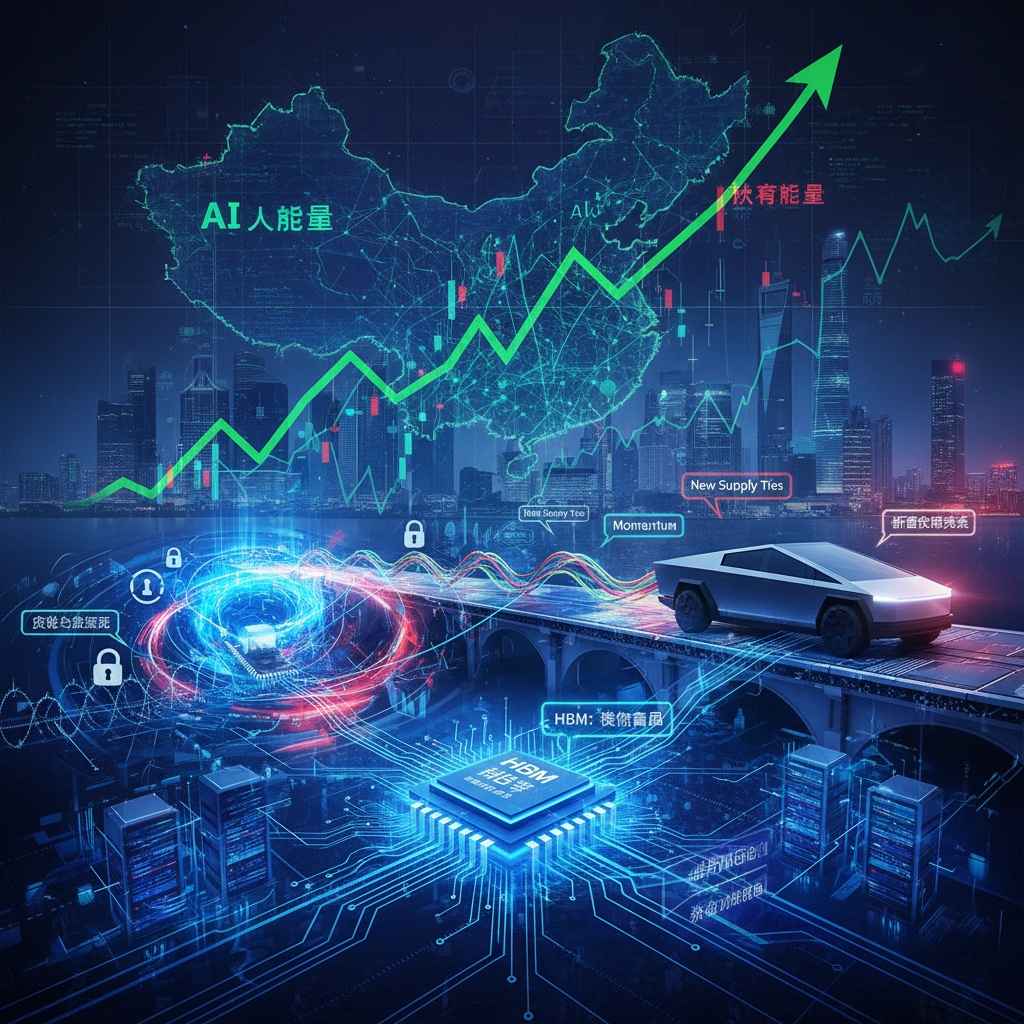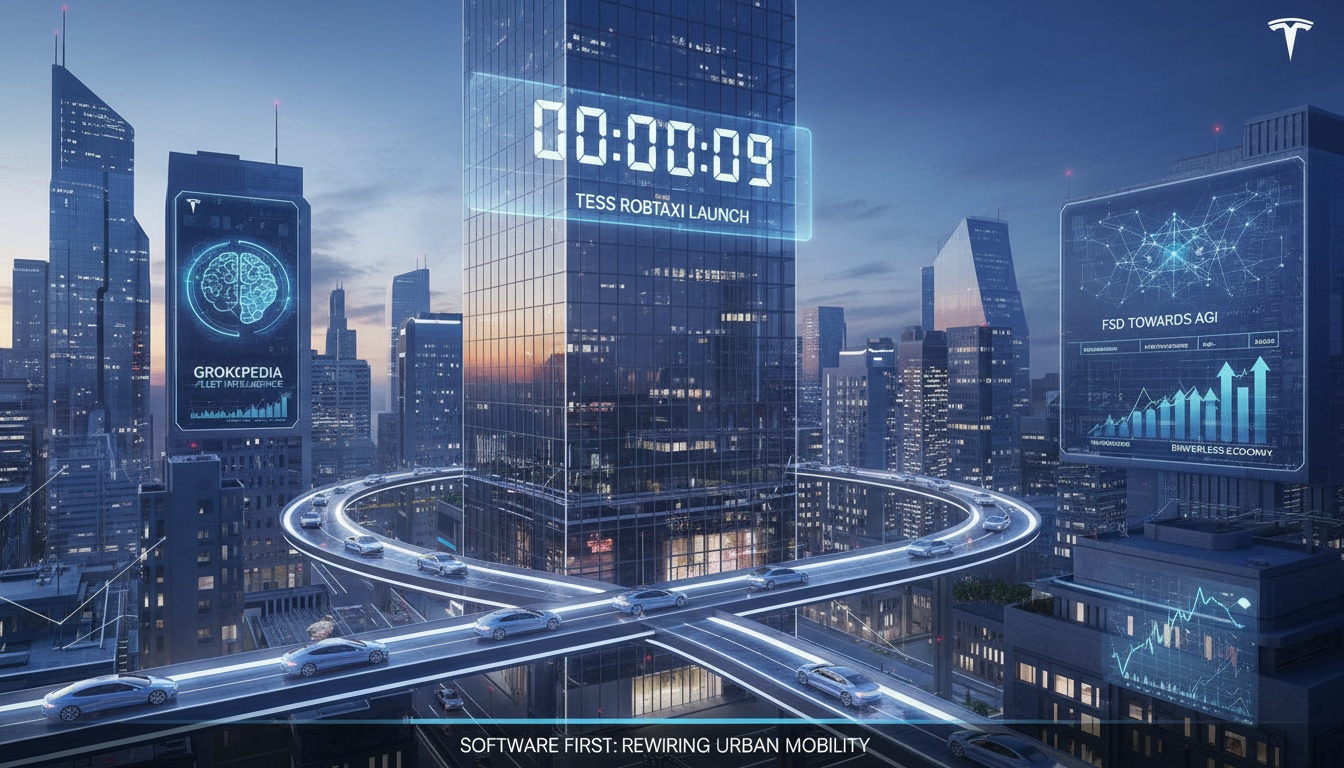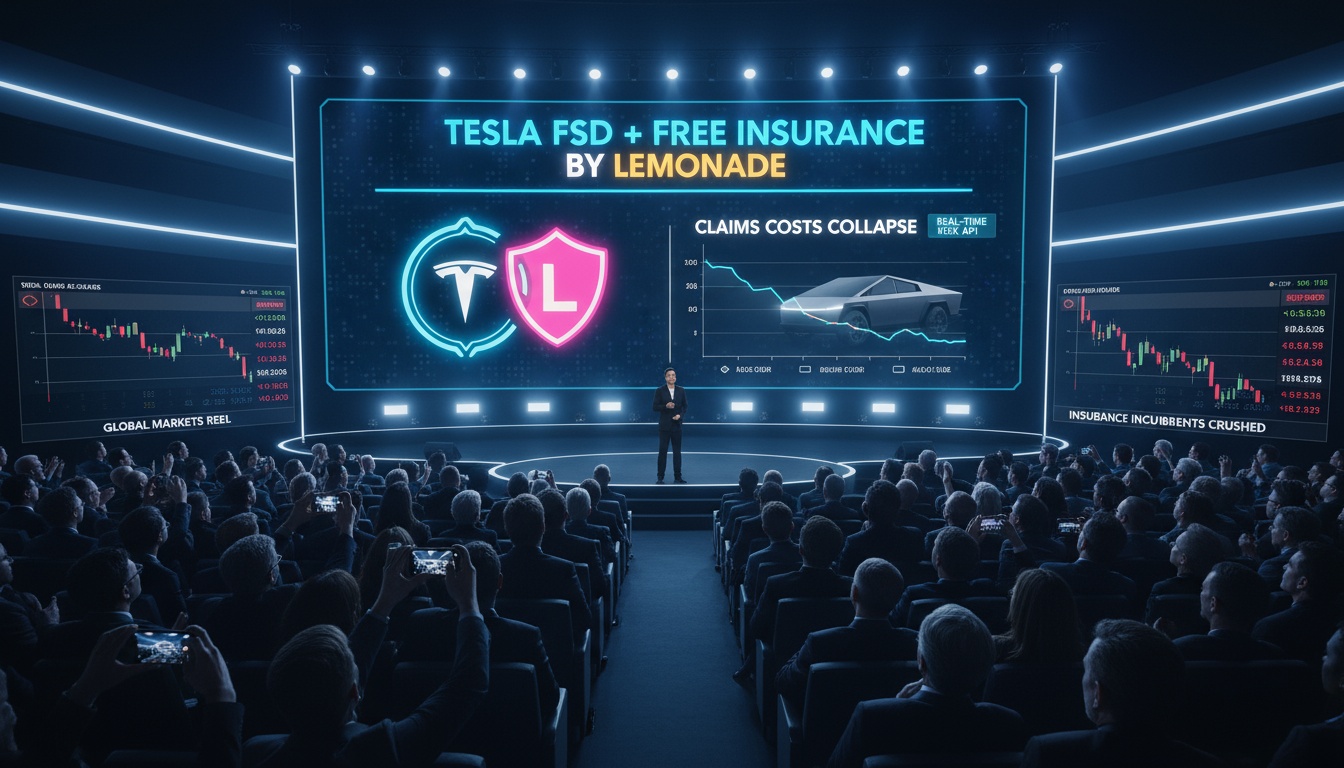● Shutdown Roulette, Fed Shock, Bonds Flip, Tesla AI Pivot
Last night in the U.S.? This week’s Washington risks, Tesla’s shift to an AI frame, Buffett Indicator warning & ‘New Normal’ rebuttal, and bond inversion — key points summarized
First, check the ‘key sweet insights’ contained in this piece
This week I explained that if the shutdown clock stops, it’s not just a short-term fluctuation but also clarifies why the ‘government employment structure’ and short-term Treasury supply are being shaken.
I pointed out that the real risk in Trump’s shaking of the Fed is not ‘dismissal’ but the transmission path of ‘reduced independence → higher term premium → valuation adjustment.’
Rather than treating TikTok as a “new American company” narrative, I organized scenario trees around court timelines, advertising market impact, and Oracle/cloud beneficiaries.
Despite the Buffett Indicator’s 217% warning, I fact-checked the ‘New Normal’ debate by explaining it through the narrowing gap between ‘earnings share vs. market-cap share.’
I didn’t end the explanation of why Microsoft corporate bonds became cheaper than U.S. Treasuries at ‘supply and demand’ — I connected it to price distortions created by passive, LDI, and credit ETFs and how that affects equity ‘risk premia.’
I reorganized Tesla as a practical frame where the stock moves on ‘AI/robotics option value’ rather than delivery volume, and noted variables such as fourth-quarter demand deferment and subsidy effects.
I explained the real meaning of the government ‘downside price guarantee’ for critical minerals and the secondary effects it may have on the inflation path.
Timeline 1) Last weekend & Friday: assessing the quality of the rebound
The Dow, S&P 500, and Nasdaq all rose, and the fear index (VIX) plunged, making the move look strongly like ‘short covering + quality rally.’
Tesla’s strength and sharp gains in some gaming stocks increased index beta, but rate-sensitive sectors were mixed depending on long-term yields.
The key is the ‘quality of the rebound.’ It is liquidity/positioning-driven (restoration from oversold) rather than due to upward earnings revisions, so this week’s macro events will be a new test.
Timeline 2) Around Tuesday midnight: shutdown time bomb and T-bill short-term supply
This shutdown differs from past “temporary unpaid → return” playbooks because it overlaps with signals of “structural layoffs,” which can directly shock employment-sensitive sentiment.
Delays in fiscal disbursements hurt near-term GDP and change the Treasury’s TGA (cash) operations and T-bill issuance mix, affecting short-term rates and money market funds (dollar cash).
There are two investment points: ① short-term Treasury rate spikes → Nasdaq volatility expansion ② slowdown in government procurement → check timing for defense and healthcare payments.
Timeline 3) This week–end of October: Fed independence debate and the interest-rate path
The image of Trump ‘firing Powell’ is legally unlikely to be realized.
The real risk is not ‘dismissal’ but the indirect route where personnel, budget, and communication pressure reduce independence, push up the term premium, and cause equity PER de-rating.
If Friday’s jobs report departs from ‘Goldilocks,’ rate-cut expectations will be re-priced, the dollar may strengthen again → a headwind for overseas equities.
TikTok: court timetable, advertising market, and the Oracle variable
The “creation of an American TikTok” story is a political signal.
The realistic pathways are ① forced sale/spin-off bill → injunction → U.S. Supreme Court ② negotiated data localization & enhanced oversight ③ operational restrictions (low probability of full shutdown).
The advertising-market impact directly affects META, GOOG, and SNAP CPMs. If TikTok targeting is constrained, competing platforms could see short-term improvements in ad pricing.
Oracle is likely to benefit from data hosting and cloud traffic inflows. However, regulatory uncertainty is a valuation discount factor.
Buffett Indicator 217%: overheated vs New Normal, the essence in numbers
The warning light is indeed on. But the difference from the 2000 dot-com era lies in the ‘quality of earnings share.’
Big Tech’s S&P market-cap share is around 44%, and its earnings contribution is also about 37%, so it’s not an ‘empty shell’ like before.
That said, don’t be complacent. Rising estimates of the real neutral rate (r*), intangible-asset accounting, offshore earnings repatriation, and buybacks distort the indicator’s denominator/numerator.
Practically, it’s effective to judge valuation margin of safety by looking at ‘market cap/GVA (gross value added)’ and ‘ERP (equity risk premium) vs. IG spread’ together.
Bond peculiarity: the real meaning of MS corporate yields < U.S. Treasuries
It’s a price distortion created by Treasury oversupply vs. scarcity in AAA corporate debt, and the mechanical buying by passive funds and LDI/pension rebalancing.
The message is simple: in a phase where the ‘quality premium’ is maximized, the equity ERP becomes relatively thin.
Quality large-cap stocks are strong, but expected returns are low, so consider timing rotation into small caps and credit beta.
Tesla: the stock moves on ‘option value’ rather than deliveries
Consensus for Q3 deliveries is about 447,000 units (views diverge).
However, recent correlation between the stock and sales has weakened. The narrative has shifted from ‘car company → AI & robotics company.’
The core checklist is ① FSD regulatory approval roadmap (NHTSA & state laws) ② Dojo, scale of training data, and cost ③ robo-taxi commercialization revenue models (ride-share/licensing) ④ fourth-quarter subsidies & demand deferral.
Approach tip: evaluate valuation by separating cash-generating auto business + energy + FSD (L4–5) + robotics option revenue in an SOTP framework under reasonable assumptions.
Analysts (e.g., Dan Ives) with high targets are highly sensitive to ‘policy acceleration.’ The regulatory timeline is the biggest variable.
Nuclear startup Oklo: reading the ‘insider selling’ signal
Large insider selling by executives during a post-listing rally is a signal to ‘re-examine valuation.’
It’s necessary to check whether the market has priced in commercial operation & licensing risks, lack of cash-flow visibility, and possible delays in technology and regulatory timelines.
Fed internal dilemma: weakening employment vs. sticky inflation
After renewed rate-cut expectations, doves inside the Fed warn of rising unemployment risk while hawks warn of inflation reigniting.
If this week’s employment data shows ‘slowing wage growth + modest hiring’ it’s Goldilocks; if it shows ‘solid hiring + firm wages’ long-term yields and the dollar are likely to resume rising, increasing Nasdaq volatility.
Memory cycle: implications from Micron and HBM
Micron beat consensus with an improved HBM and high-value mix, price increases, and supply discipline.
HBM faces packaging (CoWoS), substrate, and material bottlenecks, but a price rise and tight supply scenario through H1 2026 is plausible.
Korean firms (Samsung Electronics & SK hynix) are likely to continue benefiting structurally from ASP/mix improvement and AI server demand.
Naver × Dunamu: JP Morgan’s ‘leadership scenario’
On the surface it is an equity swap, but in substance analysts interpret it as a governance restructure scenario that elevates fintech and virtual-asset capabilities to the group level.
If wallet, pay, exchange, and content commerce are linked into one data graph, advertising LTV and financial cross-selling will improve.
Risks are regulation (VASP & travel rule), reputation, and shareholder dilution. Transparent disclosure of restructuring stages, conversion prices, and governance changes is key.
100% tariff warning on pharma: why large-cap stocks were not shaken
Large firms had already announced U.S. CAPEX months ago and submitted the ‘model answer.’
Tariff barriers are a short-term disadvantage for small foreign biotechs but a relative advantage for big pharma with U.S. presence.
However, upward pressure on ‘pharmaceutical CPI’ adds another challenge for the Fed’s inflation response. Note the paradox where policy support can stimulate prices.
Costco: the shadow of a premium that demands perfection
Sales and profits were both solid, but the stock reacted when same-store sales missed expectations by 0.2 percentage points.
A premium valuation is vulnerable to small misses. Membership revenue and online sales are firm, but high expectations mean you must accept quarterly volatility.
Critical minerals: structural change from government ‘floor price guarantee’
By effectively providing a ‘downside price guarantee’ for rare earths and lithium, the U.S. government has added a public put option to private investment.
The effects are threefold: ① easier project financing ② offtake contracts getting done ③ accelerated CAPEX.
However, in the medium-to-long term this may raise the floor for commodity prices and add upside to the inflation regime. Markets will increasingly price in the inflationary effect of security-driven policies.
Practical positioning: this week’s checklist and action ideas
Event-risk management: reduce deltas around the jobs report and shutdown, and overweight quality with solid earnings momentum and cash flow to buffer Fed/rate uncertainty.
AI value chain: break out secondary and tertiary beneficiaries from GPU → HBM → advanced packaging → substrate & materials into stages.
Tesla frame: track narrative changes (regulation, FSD, data, licensing) rather than headline numbers (deliveries).
Dollar direction: if long-term yields resume rising, expect dollar strength and a headwind for KOSPI; manage volatility for commodities and emerging markets.
Hedge: buying VIX long or put spreads around events is an efficient way to buy downside insurance.
Fact-checking cautions
‘Removal of the Fed chair’ is legally and conventionally very unlikely. Markets are more sensitive to signals that undermine independence (investigations, personnel, budget pressure).
‘Complete Americanization’ of TikTok depends on litigation, regulatory negotiations, and timing variables, separate from the political message.
< Summary >
Friday’s rebound was a positional restoration in quality terms, so this week’s shutdown and jobs data are the next test.
The real risk in the Fed independence debate is ‘higher term premium → valuation de-rating.’
The Buffett Indicator signals overheating, but earnings quality differs from 2000. Valuation judgments should combine ERP and GVA metrics.
The inversion of MS corporate bonds vs. U.S. Treasuries is the result of quality concentration and passive supply-demand distortions.
Tesla trades on AI/robotics option value. The regulatory timeline is the key variable.
The HBM-led memory supercycle is likely to remain valid through H1 2026.
The government ‘put’ for critical minerals spurs investment while adding medium-to-long-term upside pressure on inflation.
[Related articles…]
*Source: [ Jun’s economy lab ]
– [ 어젯밤 미국은?] 시한폭탄 백악관 …셧다운 / 버핏지수 경고음 / 네이버 JP모건 시선 / 떳다 테슬라
● Sanctions Backfire, China AI Manufacturing Juggernaut, Tariffs Crushed
The Paradox of U.S. Sanctions and the Return of the Chinese Stock Market, the New Rally Point Opened by ‘AI+Manufacturing’
In this piece I summarize at once the reality of China’s internal money moves, the structure of the “Chinese big-tech sprint” triggered by U.S. sanctions, EUV-alternative process experiments and the semiconductor IPO pipeline, DeepSeek’s software optimization strategy, Korea’s strategic position in HBM, and even the Trump 2.0 tariff and exchange-rate scenarios.
In particular, I numerically and pathwise explain how “AI+industry (dark factories)” will nullify 30% tariffs and reduce costs by 30–50%, and therefore which parts of K-manufacturing will be directly hit going forward.
I also organized a checklist of practical timing indicators for investments (margin balances, northbound fund flows, STAR Market turnover, Total Social Financing, CNY exchange rate, interest-rate stance).
1) As of late September, first grasp the ‘texture’ of the Chinese market rebound
What drove the 30% surge in two months was primarily China’s internal money moves rather than foreigners.
Excess liquidity trapped in deposits appears to have migrated stepwise within banks from structured financial products to securities-type products and finally to the stock market, which then ignited the rally.
A K-shaped split emerged from consumer stocks toward advanced sectors such as electric vehicles, batteries, semiconductors, and AI, and CATL overtaking Moutai in market cap is a symbolic signal of a regime shift.
Policy-wise, accommodative liquidity (reserve requirement and interest-rate flexibility) and a simultaneous AI and strategic-industry push were both in effect, while foreigners were still at a bargain-sniffing stage rather than deep buying.
The key point is that unlike global economic-driven rallies, this one is a domestic reallocation of capital rather than an inflow of foreign money, so it is more likely to spread in a patchwork manner than to be highly volatile.
2) The paradox of U.S. sanctions — the mechanism of a ‘Chinese big-tech sprint’
Cornered by sanctions, the drive for domestic substitution exploded, and intermittent rather than complete cutoffs bought time for China’s chip, software, and equipment ecosystem to grow stepwise.
With platform-company regulations effectively relaxed in 2024, Alibaba, Tencent and others have reignited efforts around their own AI chips and model optimization.
HiSilicon (Huawei), Cambricon, Biren, Moore Threads, Hygon, and Enflame each supply usable chips in their respective domains, and listings are likely to concentrate on the STAR Market.
The gap left by EUV restrictions is being filled with a “combinational strategy” of DUV multi-patterning, SAQP, process algorithm improvements, and alternative lithography.
Although domesticizing EUV itself is difficult in the short term, attempts are underway to raise yields and performance by mimicking the effects of EUV through process techniques.
3) DeepSeek’s rapid rise: turning hardware constraints into software advantage
The core was raising short-term benchmark metrics by complementing limited chip performance with algorithmic optimization (sparsity, quantization, knowledge distillation, kernel tuning).
Hardware limitations instead sparked a software-efficiency war, and the concentration of Chinese AI talent spread across global big tech created a “collective intelligence” that enabled rapid catch-up.
The point is not merely “if chips are lacking, fill the gap with software,” but that the game changed to a strategy of vertical integration from chip to model to framework to compiler, lowering total cost of ownership (TCO).
4) Semiconductor front: Korea faces both opportunity and risk
Make clear that Korea is playing the game in memory rather than GPUs.
In HBM, SK Hynix and Samsung Electronics still hold the dominant positions, and specification upgrades provide the two Korean leaders with “qualitative defense.”
China’s HBM chase is not easy in the short term, and challenges in packaging, testing, and materials act as bottlenecks.
If U.S. sanctions are prolonged and variables arise for local Chinese factory operations, an immediate supply contraction could lead to sharp rises in DRAM and NAND prices.
Therefore, one must also view the structure in which “price leverage” can serve as some defensive buffer even in the worst-case scenario.
5) ‘AI+Industry’ and dark factories: a productivity shock that eats 30% tariffs
China’s real game-changer is attaching AI to traditional production lines — “AI+industry.”
If dark factories that run 24/7 expand by introducing AI and robots into assembly, inspection, and logistics, output per unit time and per unit power will surge.
If AI-driven 30–50% productivity gains offset tariffs of 25–30%, price competition could tilt back in China’s favor.
Energy storage systems (ESS), battery materials, power semiconductors, industrial robots, and precision motion control emerge as simultaneous beneficiary axes.
If this axis takes off, Korea’s steel, shipbuilding, machinery, and intermediate goods export price pressure could increase, making pivots toward high value-add and service-oriented models within those industries essential.
6) Reordering U.S. political and tariff risks — what’s different about ‘Trump 2.0’
The share of U.S. trade deficits has shifted from being concentrated on China alone to being spread across allied countries, increasing the likelihood that tariffs and import controls could be extended to allies as well.
If a strong dollar and exchange-rate volatility reemerge, the chain “CNY stability → northbound fund inflows → equity risk-on” could be disrupted.
Even if the global inflation path slows, if the geopolitical premium rises again, the pace of interest-rate declines could be delayed, which is another factor to keep in mind.
7) Markets to watch now, and timing indicators
The top-tier plays are China’s domestic STAR Market and ChiNext AI semiconductor chain, industrial automation and robots, power semiconductors, battery materials, and satellite/defense.
Hong Kong for platforms, cloud, power semiconductors, and data-center power solutions should be monitored as a secondary tier.
In Korea, the structural beneficiaries are the HBM chain, CoWoS and FOPLP advanced packaging, AI server power and cooling components, and manufacturing AI-solution companies.
Five practical timing indicators are summarized below.
- Check whether margin-borrow balances and STAR Market turnover spikes persist.
- See if northbound fund net inflows continue for three consecutive weeks and whether average daily size is expanding.
- Verify whether Total Social Financing (TSF) and medium-to-long-term manufacturing loans are rising in tandem.
- Monitor whether the dollar/CNY rate stabilizes below the mid-7 range (under the high 7s) and whether exchange-rate volatility is decreasing.
- Check whether the PBOC’s interest-rate and reserve-requirement stance is “fixed on easing,” and whether policy communication turns more aggressive.
8) Risk checklist and scenarios
- In a deep-sanctions scenario, the bear case is that disruption of certain chip and equipment supply chains compresses growth-stock valuations.
- If real-estate credit risk resurfaces, domestic demand sentiment and bank leverage could shrink and weaken the rally’s intensity.
- An excessive IPO and rights-issue rush could cause short-term corrections through oversupply.
- Conversely, if state pension funds and insurers actually receive “window guidance” to raise their equity allocations, the base case would extend into an ongoing rally.
9) Positioning guidelines
- A barbell strategy is effective.
- One basket should contain Korean HBM, advanced packaging, and AI power components to aim for both qualitative defense and upside.
- The other basket should take leveraged beta exposure to China’s “AI+industry” core (power semiconductors, robots, battery materials, STAR Market AI chips).
- In periods of exchange-rate volatility, adjust duration with phased entries and hedges, and flexibly rebalance growth/value weighting according to changes in the interest-rate regime.
10) One-line insight for today
This rally is not a market driven by “money coming in from outside” but by “changes in how money is used,” and tariffs will ultimately be defeated by AI-driven productivity.
< Summary >
- The Chinese market surge is a joint product of internal money moves and an AI and strategic-industry drive.
- The paradox of sanctions has driven simultaneous growth in chips, software, and equipment, and DeepSeek narrowed hardware gaps through software optimization.
- Korea holds structural strengths in HBM and packaging, and despite sanction risks can partially defend via price leverage.
- Because ‘AI+manufacturing’ can neutralize tariffs and sharply lower costs, China’s dark factories pose direct pressure on K-manufacturing.
- Timing should be judged by five indicators: margin balances, northbound funds, TSF, exchange rate, and monetary-policy communication.
[Related articles…]
Hidden Drivers of the Chinese Market Rebound and the Structure of the Money Move
How AI+Manufacturing Creates Dark Factories and the Impact on Korean Manufacturing
*Source: [ 경제한방 ]
– 미 제재가 부른 반전! 10년 만에 폭발한 중국 증시, 지금 꼭 눈여겨 볼 시장은? / 전병서 소장



